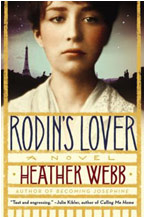 So you noticed you made the list of overused plotlines or openings in Part One HERE. Or maybe you didn’t, but you’d like a little advice on how to flex your creative muscles. You’ve come to the right place. Let’s start with–
So you noticed you made the list of overused plotlines or openings in Part One HERE. Or maybe you didn’t, but you’d like a little advice on how to flex your creative muscles. You’ve come to the right place. Let’s start with–
OPENINGS
Everyone will tell you opening scenes are important. Almost more important than any other part of a book…except maybe the climax. If your opening doesn’t ROCK, your book will sink like a stone, out of sight and into the murky depths of the slush pile. So first and foremost, write an original, terrific opening. How does one do that?
1. Open the book with a great first line. A first line does a lot of things–it sets the tone, evokes a sense of time and place, gives a strong sense of the protagonists problem or voice. Yes, all of these things are possible in one little line. Try a few on for size. For some writers, it’s the last thing they do before they type THE END. If this works for you, go for it. Just make it good. Oh, and by the way, this line should be short-ish, or your risk losing the reader’s attention.
2. Open the book with the moment the character’s life changes. We don’t care about their humdrum existence before “IT” happened.
3. Avoid clichés–dreams, temporary amnesia, dead bodies lying on the ground with inspectors standing over them, or *gasp*, left devoid of blood.
4. Deliver the reader into the middle of an action sequence. This does not have to be an explosion, a chase scene, etc. Action merely means the character is DOING something. This something should encompass a characteristic trait that distinguishes your protagonist from all of the others out there.
5. Avoid explaining the protag’s backstory. It’s a bunch of blah blah the reader can surmise through the course of the novel. Besides, witholding information creates tension. Hemingway championed the icebery theory (or the theory of omission)–less is more. Take his advice. Don’t bog down the story with info-barf.
6. Create a character worth rooting for. If a reader can’t sympathize with the protagonist in the first ten pages, they’re likely to put the book down. This does not mean you can’t develop an awesome “bad guy” as the protag. Just give us something to hold onto, something that makes us want to cheer your villain on as they attempt to secure his/her ultimate goal. Good questions to ask yourself to get the ball rolling: How do I want the reader to feel about him/her? How is my protag wounded?
I NEED HELP!
Still need help developing this grand opening?
1. Find a critique partner or group. If they’re worth their weight in beans, they’ll let you know what stinks. And make sure more than one person reads it. It doesn’t matter how great that one single critique was, remember this is a subjective business. It’s better to have a few opinions before you go changing anything or keeping something that’s rank.
2. Go to the library. Read the first paragraph of five of your favorite books. Now, select ten others at random. Read the first paragraph. Write down the most memorable lines/openings on a sheet of paper. What did you like? What didn’t you like? How can you improve your own?
3. Read in your genre. A LOT. It will become obvious what is overused.
4. Visit my blog for the OPENING LINE CONTEST to begin on February 10th. Winners will receive a free critique of their opening scene in addition to a FREE CONSULTATION from a multi-pubbed author, magazine editor and social media expert, SHARI STAUCH of SHARK MARKETING.
Any one else have tips they would like to share?
3 Comments
Join the conversation and post a comment.
Trackbacks/Pingbacks
- Between the Sheets » Blog Archive » Overdone Plotlines & What to Do About Them (Part Three of Three) - [...] trite openings or overused plotlines. We’ve reviewed a list of the most common storylines in PART 1 and how…














Great advice, Heather. Especially: “2. Go to the library. Read the first paragraph of five of your favorite books. Now, select ten others at random. Read the first paragraph. Write down the most memorable lines/openings on a sheet of paper. What did you like? What didn’t you like? How can you improve your own?” Thanks for sharing.
Too much back story too soon is a killer.
My Crit Partners keep asking for explanations. I’ll have to remember that there’s a balance between withholding too much information and spilling it out. Good advice!